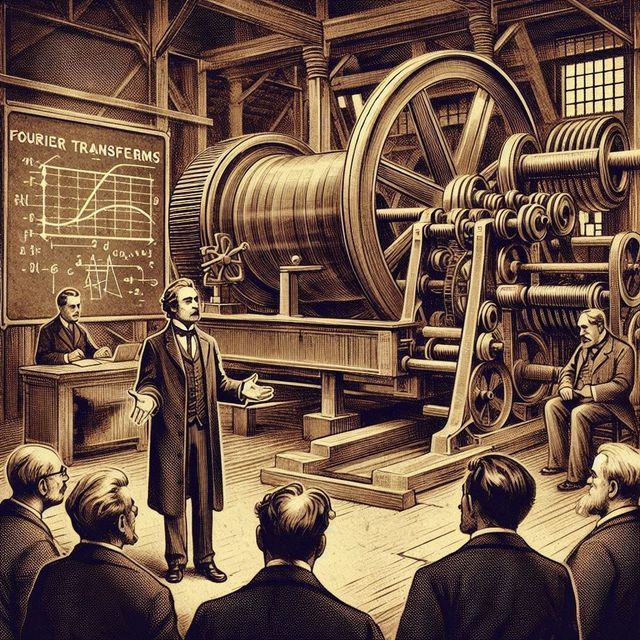-
Vijay Fafat
- Published on
There is an old folk story, “The Appointment in Samarra”, in which a man sees Death in a market in Baghdad and flees to Samarra to escape its clutches, only to find that his appointment with Death was in Samarra… (https://www.k-state.edu/english/baker/english320/Maugham-AS.htm)
There is also another folk tale concept called “Laplace’s Demon”, a supremely powerful intelligence which, in a completely deterministic universe, can predict the future perfectly once it knows the state of the universe at any given time.
The story by S.P. Meek combines these 2 ideas with a third line of thought - any complicated function, subject to certain conditions, can be decomposed into an infinite series of harmonics - say through Fourier analysis. So why not think of the future state of an individual as a function of an extremely large number of current “harmonics” whose knowledge would enable the prediction of the individual’s future perfectly, including the time and place of her death? Of course, this is a lot of hand-waving and sleight-of-hand in ignoring a myriad conceptual problems, but why constrain the imagination? Once you accept that premise, the story unfolds beautifully as a fairly well-written mathematical fiction. As the story’s by-line says:
“We read perpetually of plotting curves. For instance, by obtaining the necessary data and information, the time of future tides can be predicted with exactitude. Certain machines are now in use that can solve all kinds of seemingly unsolvable mathematical problems in a very short space of time. It seems to us quite possible that some day some scientist and mathematician might attain the apparently “impossible” and learn to plot curves for human beings which will result in true prophecies. How desirable such an invention might be is another matter. Much philosophising might be done on that score. Certainly the author furnishes food for thought.”
Thomas Wallace was a first-rate mathematical mind, but his college friend, Bob Jerningham, was in a completely different league, someone who “was easily the most brilliant man of this generation. Einstein was a schoolboy compared to what Jerningham was. In addition to his immense mathematical ability, he had a practical ability in a mechanical line, that was little short of genius”. The two of them together, based on Jerningham’s research, built the “Predictograph”, a very complex machine which could take a large set of hundreds of time-series “curves” on identified variables and convert them into predictions about the future (note that the story was written before electronic computing machines were known so such calculations were in the realm of fabulation).
They used the Predictograph to generate the needed capital through stock market predictions and applied the monies generated for further development of the Predictograph, to the point where the machine could forecast the exact date and time of the deaths of Jerningham, his fiancee (Mabel), and Thomas. They don’t quite believe the conclusions because clearly, if you are predicted to die in Hawaii on Dec 25 of a given year, you can ensure you are in New Zealand at that time… And so Jerningham takes many appropriate steps to prove the machine’s prognostications to be incorrect…and yet, the predictions come true in their exact manner articulated by the Predictograph, through a series of strange happenstances.
… and now Thomas waits for his own prophesied death, hoping one last time that his friend, the narrator, can prove the Predictograph wrong…
To reiterate, there are many glaring holes in the story so it is best not to read it with a critical mind but just enjoy the flow of it.

